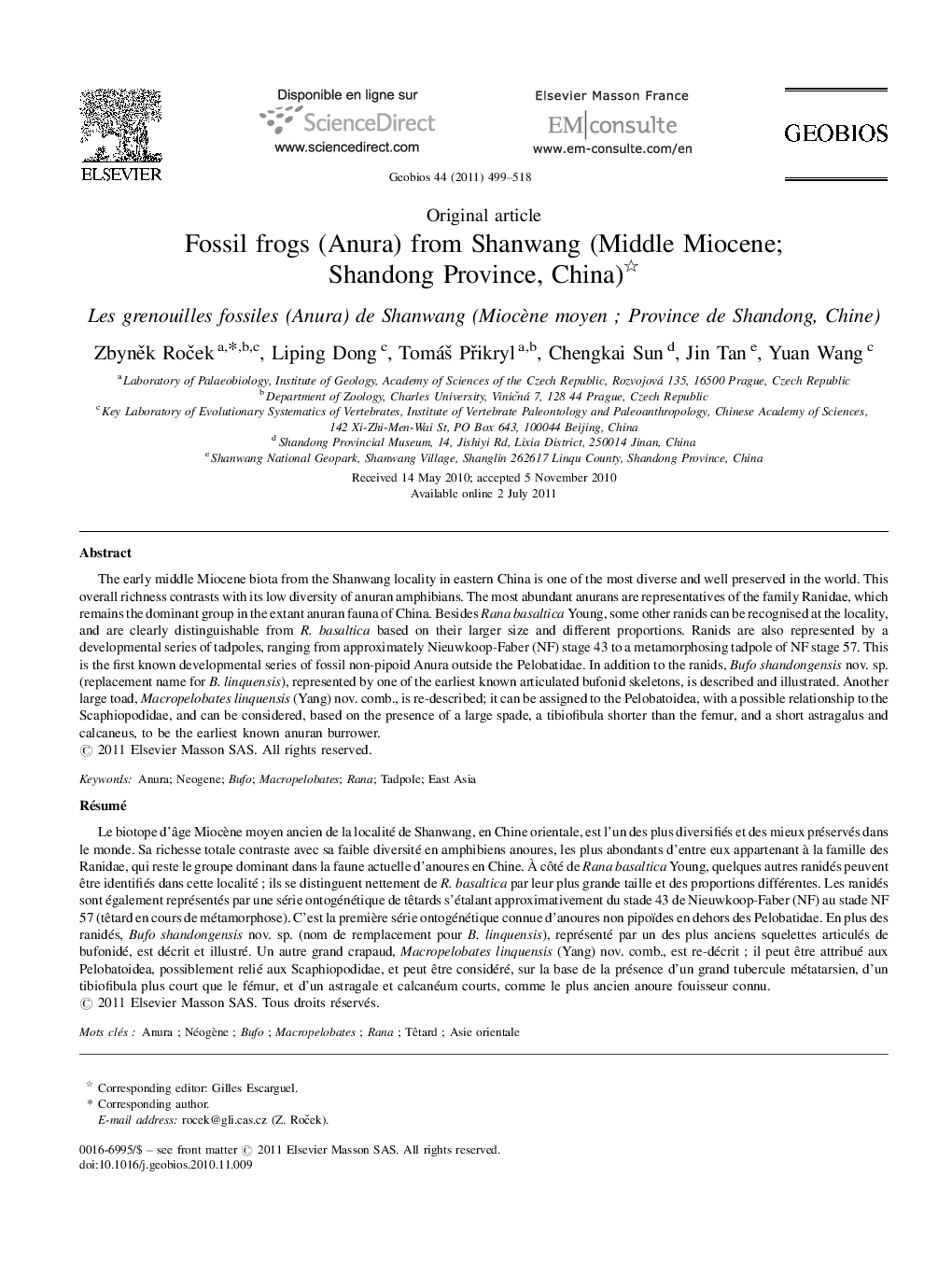| کد مقاله | کد نشریه | سال انتشار | مقاله انگلیسی | نسخه تمام متن |
|---|---|---|---|---|
| 4748522 | 1360113 | 2011 | 20 صفحه PDF | دانلود رایگان |

The early middle Miocene biota from the Shanwang locality in eastern China is one of the most diverse and well preserved in the world. This overall richness contrasts with its low diversity of anuran amphibians. The most abundant anurans are representatives of the family Ranidae, which remains the dominant group in the extant anuran fauna of China. Besides Rana basaltica Young, some other ranids can be recognised at the locality, and are clearly distinguishable from R. basaltica based on their larger size and different proportions. Ranids are also represented by a developmental series of tadpoles, ranging from approximately Nieuwkoop-Faber (NF) stage 43 to a metamorphosing tadpole of NF stage 57. This is the first known developmental series of fossil non-pipoid Anura outside the Pelobatidae. In addition to the ranids, Bufo shandongensis nov. sp. (replacement name for B. linquensis), represented by one of the earliest known articulated bufonid skeletons, is described and illustrated. Another large toad, Macropelobates linquensis (Yang) nov. comb., is re-described; it can be assigned to the Pelobatoidea, with a possible relationship to the Scaphiopodidae, and can be considered, based on the presence of a large spade, a tibiofibula shorter than the femur, and a short astragalus and calcaneus, to be the earliest known anuran burrower.
RésuméLe biotope d’âge Miocène moyen ancien de la localité de Shanwang, en Chine orientale, est l’un des plus diversifiés et des mieux préservés dans le monde. Sa richesse totale contraste avec sa faible diversité en amphibiens anoures, les plus abondants d’entre eux appartenant à la famille des Ranidae, qui reste le groupe dominant dans la faune actuelle d’anoures en Chine. À côté de Rana basaltica Young, quelques autres ranidés peuvent être identifiés dans cette localité ; ils se distinguent nettement de R. basaltica par leur plus grande taille et des proportions différentes. Les ranidés sont également représentés par une série ontogénétique de têtards s’étalant approximativement du stade 43 de Nieuwkoop-Faber (NF) au stade NF 57 (têtard en cours de métamorphose). C’est la première série ontogénétique connue d’anoures non pipoïdes en dehors des Pelobatidae. En plus des ranidés, Bufo shandongensis nov. sp. (nom de remplacement pour B. linquensis), représenté par un des plus anciens squelettes articulés de bufonidé, est décrit et illustré. Un autre grand crapaud, Macropelobates linquensis (Yang) nov. comb., est re-décrit ; il peut être attribué aux Pelobatoidea, possiblement relié aux Scaphiopodidae, et peut être considéré, sur la base de la présence d’un grand tubercule métatarsien, d’un tibiofibula plus court que le fémur, et d’un astragale et calcanéum courts, comme le plus ancien anoure fouisseur connu.
Journal: Geobios - Volume 44, Issue 5, September–October 2011, Pages 499–518